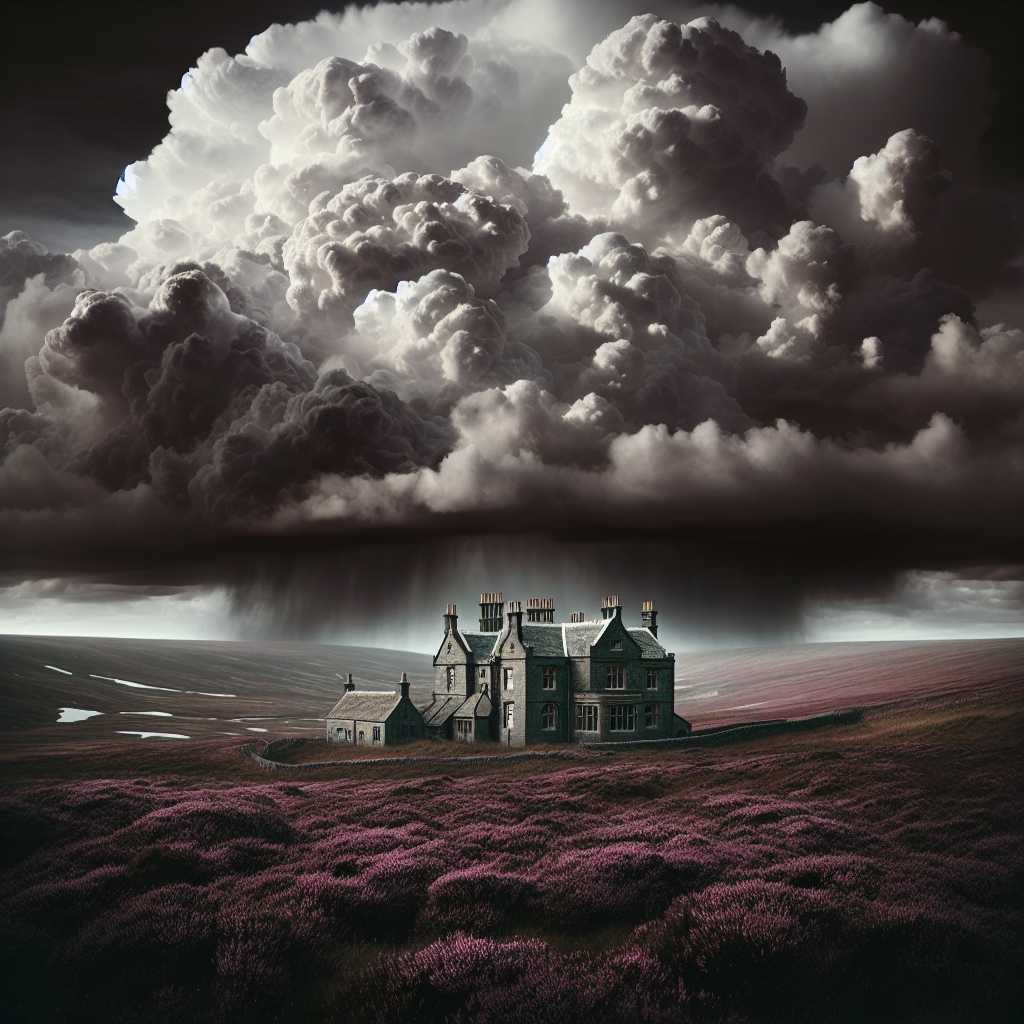Exploring the Enduring Legacy of Emily Brontë’s Wuthering Heights
Since its publication in 1847 under the pseudonym “Ellis Bell,” Emily Brontë’s only novel, “Wuthering Heights,” has continued to intrigue and captivate readers with its passionate and unconventional narrative. Through its dramatic storytelling, it has become both critical and literary cannon, weaving themes of love, revenge, and the supernatural across the brooding landscapes of England’s Yorkshire moors.
The Novel’s Overview and Setting
Wuthering Heights presents a multi-generational story about the complex relationships between two families, the Earnshaws and the Lintons, most notably focused on the ill-fated love between Heathcliff and Catherine Earnshaw. The novel is notable for its dark portrayal of passion and its insightful portrayal of characters who are both deeply flawed and compellingly human.
The setting of the Yorkshire moors is fundamental to the atmosphere of “Wuthering Heights,” providing a bleak, rugged backdrop that perfectly complements the tumultuous events of the narrative. The novel’s dramatic natural surroundings also significantly support its symbolic structure, emphasizing elements like the contrast between civilization and nature, or confinement versus freedom.
Characters and Theme Analysis
“
Heathcliff and Catherine—An Analysis of Doomed Love ”
Central to “Wuthering Heights” is the tempestuous relationship between Heathcliff, an orphan brought to live at Wuthering Heights as a child by Mr. Earnshaw, and Mr. Earnshaw’s daughter Catherine. Their love is the heart of this story, a bond too strong for death to sever but filled with a brutality seldom seen in romantic literature.
Central to “Wuthering Heights” is the tempestuous relationship between Heathcliff, an orphan brought to live at Wuthering Heights as a child by Mr. Earnshaw, and Mr. Earnshaw’s daughter Catherine. Their love is the heart of this story, a bond too strong for death to sever but filled with a brutality seldom seen in romantic literature.
“
Heathcliff’s Vengeance – A Cycle of Revenge ”
Upon his return after a mysterious absence, Heathcliff sets any notion of romantic heroism aside in pursuit of a merciless revenge plan against those he feels have wronged him—including Catherine’s brother Hindley and his own rival in love, Edgar Linton. Structure and Narrative Technique
Upon his return after a mysterious absence, Heathcliff sets any notion of romantic heroism aside in pursuit of a merciless revenge plan against those he feels have wronged him—including Catherine’s brother Hindley and his own rival in love, Edgar Linton.
Structure and Narrative Technique
“
The Layered Narration ”
Emily Brontë employs a complex narrative structure in “Wuthering Heights,” utilizing an intricate web of storytellers. The bulk of the tale is presented through the eyes of Nelly Dean, a servant who witnesses much of the saga. Additionally, Lockwood, a tenant at Thrushcross Grange, serves as an outer framework narrator whose experiences uncovering the history provide us access to Nelly’s narrative.
Emily Brontë employs a complex narrative structure in “Wuthering Heights,” utilizing an intricate web of storytellers. The bulk of the tale is presented through the eyes of Nelly Dean, a servant who witnesses much of the saga. Additionally, Lockwood, a tenant at Thrushcross Grange, serves as an outer framework narrator whose experiences uncovering the history provide us access to Nelly’s narrative.
This multiplicity of voices allows readers to question reliability and truth in storytelling, adding layers of ambiguity and complexity that give insight into various character perspectives.
Impact on Literature and Pop Culture
“
A Masterpiece Recognized ”
Though “Wuthering Heights” received mixed reviews during the author’s lifetime, it has since become not just an English literary classic but a cultural phenomenon referenced in countless works ranging from films to songs.
Though “Wuthering Heights” received mixed reviews during the author’s lifetime, it has since become not just an English literary classic but a cultural phenomenon referenced in countless works ranging from films to songs.
“
Adaptations Across Media ”
The tale’s unorthodox take on romance and morality alongside its haunting settings has been especially appealing to creators in different media. There have been several movie adaptations, as well as operatic renditions and entrances into other art forms like ballet.
The tale’s unorthodox take on romance and morality alongside its haunting settings has been especially appealing to creators in different media. There have been several movie adaptations, as well as operatic renditions and entrances into other art forms like ballet.
“
Continued Academic Engagement ”
Literary scholars continue to dissect themes such as gender roles, psychoanalytic theories, social classes, and colonialism subtexts throughout Brontë’s work. “Wuthering Heights” retains its relevance by bearing varied interpretations that engage modern readers on different levels. Notes
Literary scholars continue to dissect themes such as gender roles, psychoanalytic theories, social classes, and colonialism subtexts throughout Brontë’s work. “Wuthering Heights” retains its relevance by bearing varied interpretations that engage modern readers on different levels.
